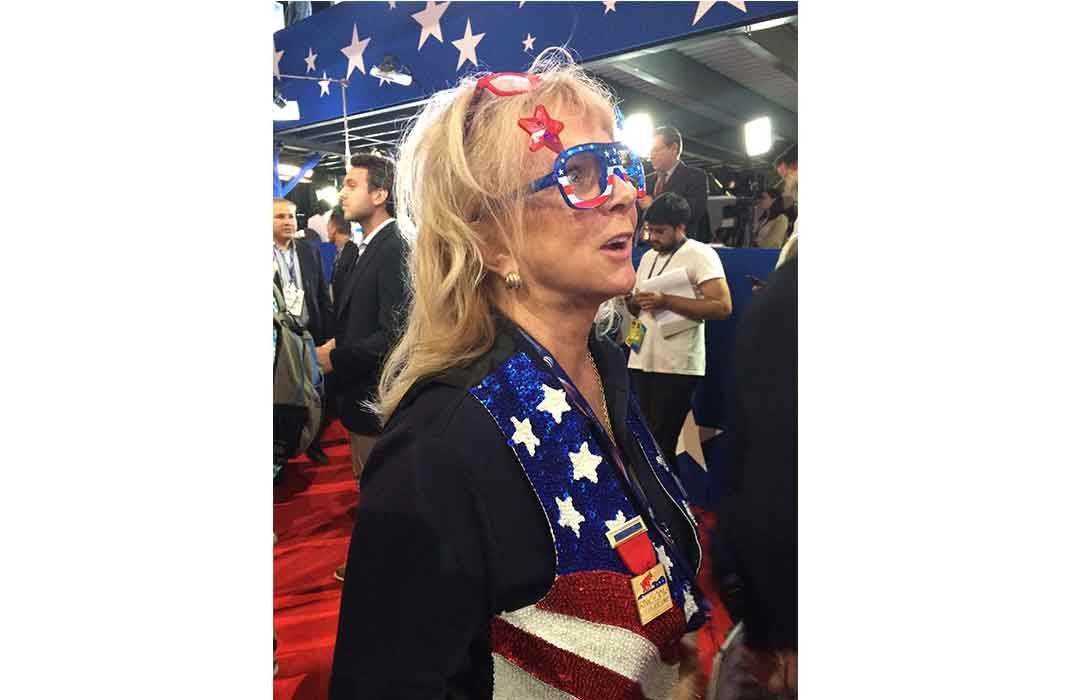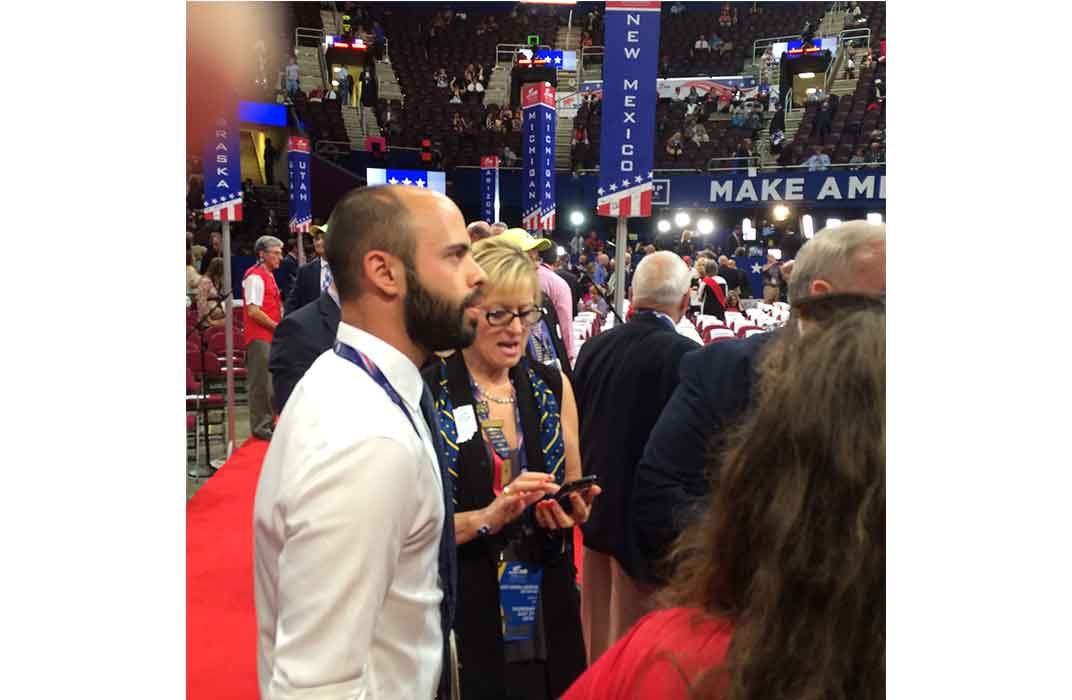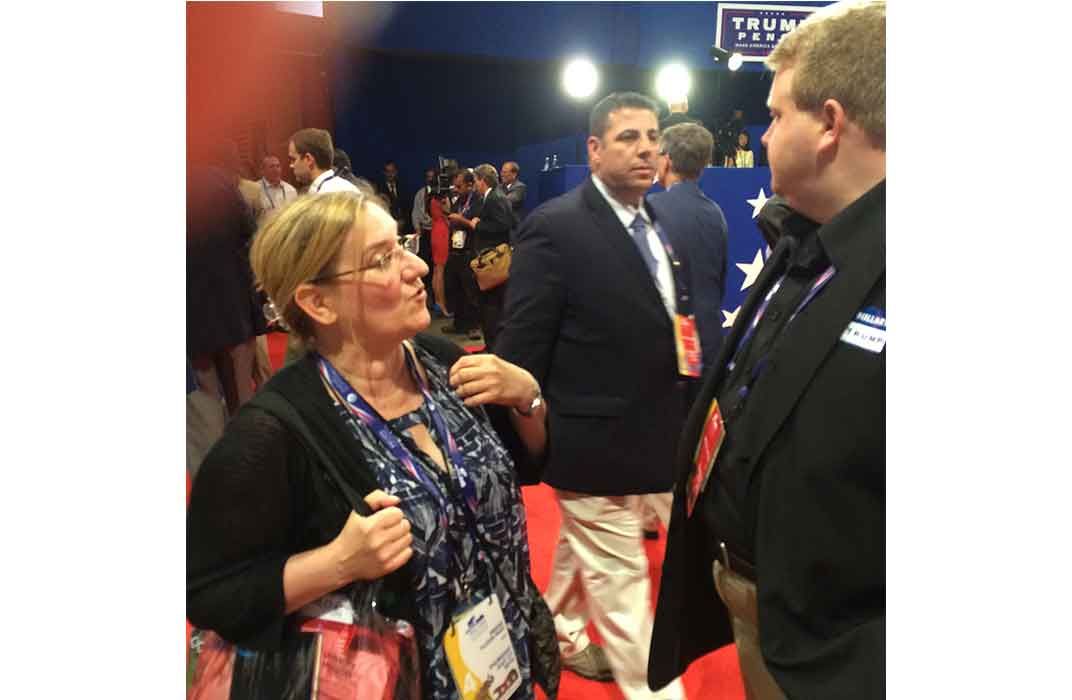How Do Smithsonian Curators Decide What to Collect at the Political Conventions?
For Smithsonian’s Lisa Kathleen Graddy and Jon Grinspan, it’s trying to guess what people of the future will want to know about 2016
/https://tf-cmsv2-smithsonianmag-media.s3.amazonaws.com/filer/6a/85/6a85f17a-b9c9-4e83-b719-87719ca3fd62/img0676web.jpg)
Here’s how glamorous it is to be a Smithsonian curator collecting artifacts at a national political convention: You’ve been working up to 12 hours a day for four days, most of them on your feet. You’ve been toggling between the great outdoors, where the heat index has been pushing 100 degrees, and an arena air-conditioned to the chill of a meat locker. You‘ve been asking intensely impassioned strangers to donate some of their most prized possessions for the sake of history, and you’ve finally scored an artifact you’ve been coveting from the opening gavel—a pair of those three-sided vertical state signs from the convention floor that direct delegates where to sit.
They are made of something like cardboard, so you don’t want to crush them. Yet they are triangular, and the edges are sharp enough to imprint the skin on your hand. Other convention attendees are heading out for their final night of partying, but you are heading for your car so you can entrust the signs to the safety of your trunk. Your car is parked many blocks away.
Then a pedicab looms out of the traffic. As you climb in, you might be tempted to think of divine intervention.
Yet this is the life Lisa Kathleen Graddy and Jon Grinspan, curators with the political history division of the Smithsonian’s National Museum of American History, have chosen. After the Republican National Convention ended in Cleveland last week, they shipped roughly 100 pounds of ephemera back to Washington, D.C. Then they headed for Philadelphia, for another round of collecting among the Democrats.
That’s what they do to document this moment in the nation’s political history—to gather the physical objects that express the passions and issues of the 2016 campaign.

They can’t simply hoover up everything people want to give away; there’s too much of it, and some of it is old hat. So their essential challenge is to determine, in the moment, which things might retain their meaning over the long haul.
“The conversation around contemporary collecting is that you’re gambling,” Graddy said when we caught up with her and Grinspan in Philadelphia. “You’re playing hunches about what seems to relates to what has come before and what seems really new and different.”
Grinspan likened the enterprise to “being a time traveler, trying to guess or think what will be useful to people in a hundred years.”

What he likes is “the back and forth, when there’s a debate going on through objects.” There are times “when there’s an appeal or an argument to be made through material from the convention, like when protesters take something and change it. In a hundred years, you’ll be able to see a conversation between a poster that says, ‘Make American Great Again’ and one that says, ‘America Was Never Great.’ ”
People’s passion clearly counts, but so does creativity. “One of the things I find fascinating is the way delegates are taking material and repurposing it,” Graddy said. “You’re seeing wonderful things that give the party’s ideas and then you see delegates write over them or add things to them to personalize them.” In Philadelphia, for example, some delegates were amending the nearly ubiquitous “Love Trumps Hate” signs to read “Bernie Trumps Hate.”
The 2016 campaign has already been historic for Donald J. Trump’s insurgency and Hillary Clinton’s becoming the first female major-party nominee—and for the intensity of expression of various points of view. The curators are seeking to capture the rough and tumble—minus clearly gratuitous invective.

Highly idiosyncratic expressions of political sentiment are rare and potentially more telling than manufactured stuff.
In Cleveland, one woman wore a homemade red floor-length cape with “Trump” sewn onto the back in sparkly white letters and electrified white Christmas lights lining the hem.
In Philadelphia, another woman—presumably a different woman—sported a homemade superhero cape touting Hillary Clinton.
The difficulty, the curators said, is that the more energy people put into artifacts to express themselves, the more they want to hold onto them—at least for the duration of the convention.
Take the women with the Clinton cape: “The feeling I got from her is that she would love to see it in the Smithsonian Institution, but not right now because it’s such an important part of her identity as someone who was at this convention,” Graddy said.
In those cases, the curators dole out their business cards—Grinspan said he went through hundreds just in Cleveland—and hope the potential donors get back to them. On the weekend separating the conventions, emails from potential donors began to trickle into their inboxes.
“If this works out,” Graddy said, “it’ll be like Christmas all year long.”
/https://tf-cmsv2-smithsonianmag-media.s3.amazonaws.com/accounts/headshot/tom-frail-head-shot.jpeg)
/https://tf-cmsv2-smithsonianmag-media.s3.amazonaws.com/accounts/headshot/tom-frail-head-shot.jpeg)